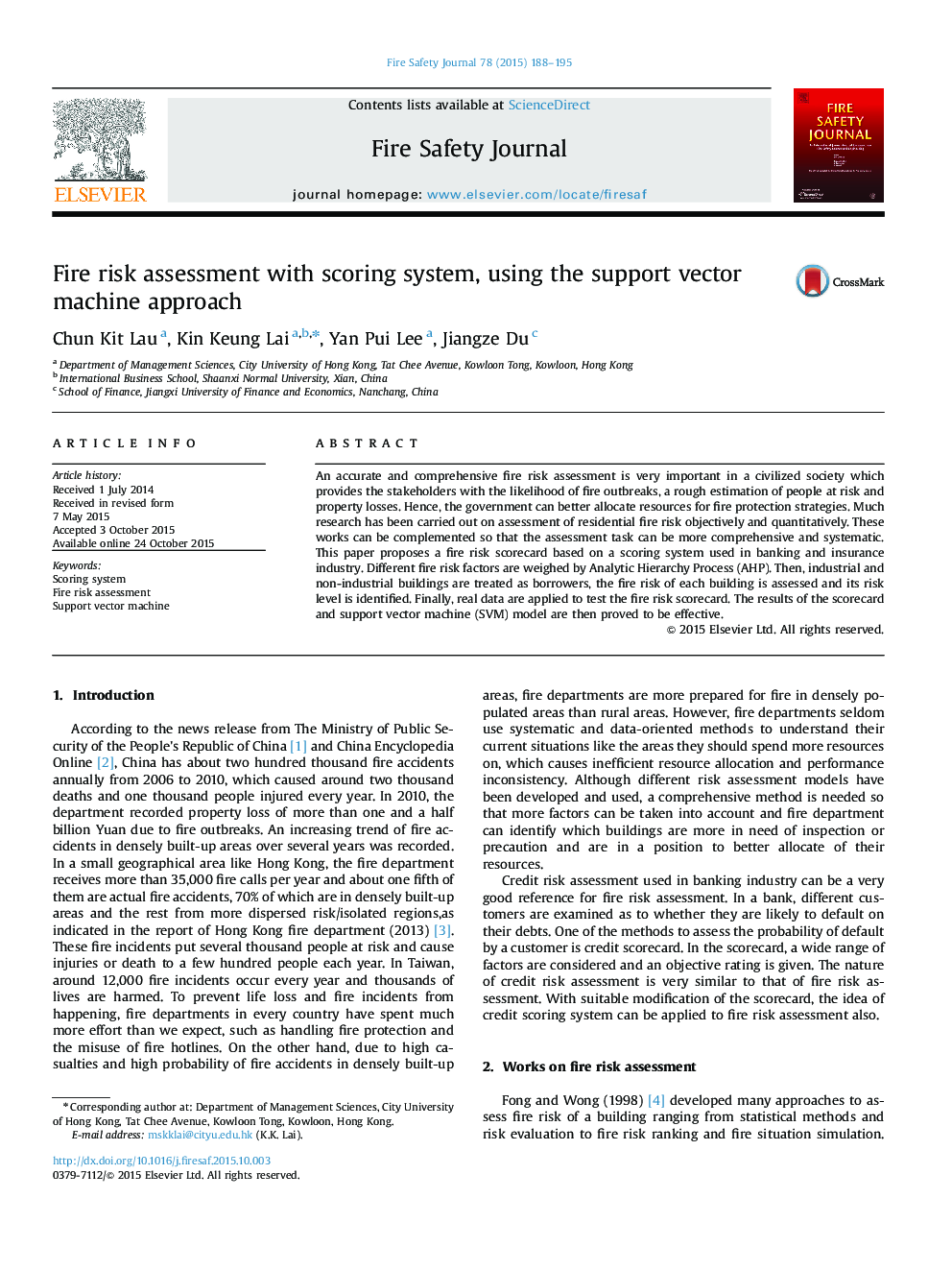| Article ID | Journal | Published Year | Pages | File Type |
|---|---|---|---|---|
| 269742 | Fire Safety Journal | 2015 | 8 Pages |
•The procedures and mechanism of fire risk assessment by fire risk scorecard were explained.•The fire risk assessment factors by experts’ advice were identified.•The weighting of the factors was determined by Analytic Hierarchy Process(AHP) which reflects the relative impacts on the risk levels of buildings.•The Scorecard was justified by real world data and verified by support vector machine(SVM).•The results and Implications of the scorecard were discussed.
An accurate and comprehensive fire risk assessment is very important in a civilized society which provides the stakeholders with the likelihood of fire outbreaks, a rough estimation of people at risk and property losses. Hence, the government can better allocate resources for fire protection strategies. Much research has been carried out on assessment of residential fire risk objectively and quantitatively. These works can be complemented so that the assessment task can be more comprehensive and systematic. This paper proposes a fire risk scorecard based on a scoring system used in banking and insurance industry. Different fire risk factors are weighed by Analytic Hierarchy Process (AHP). Then, industrial and non-industrial buildings are treated as borrowers, the fire risk of each building is assessed and its risk level is identified. Finally, real data are applied to test the fire risk scorecard. The results of the scorecard and support vector machine (SVM) model are then proved to be effective.
